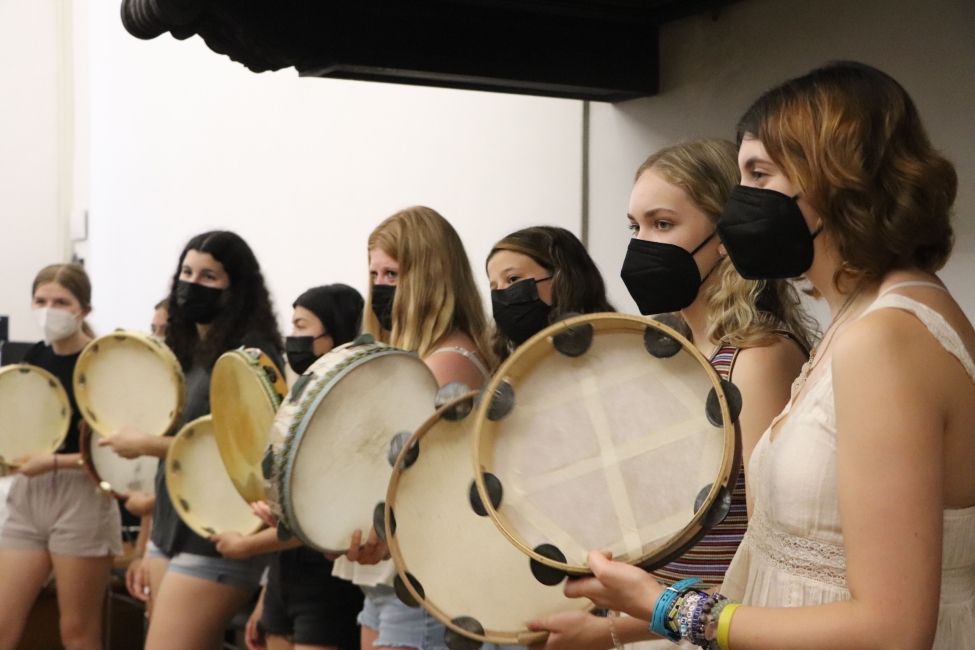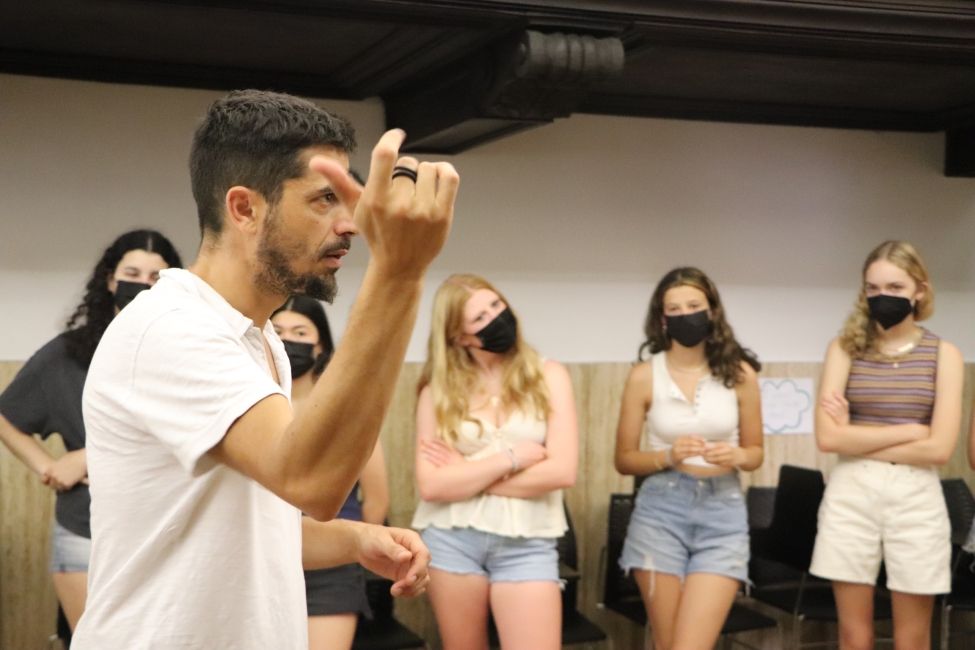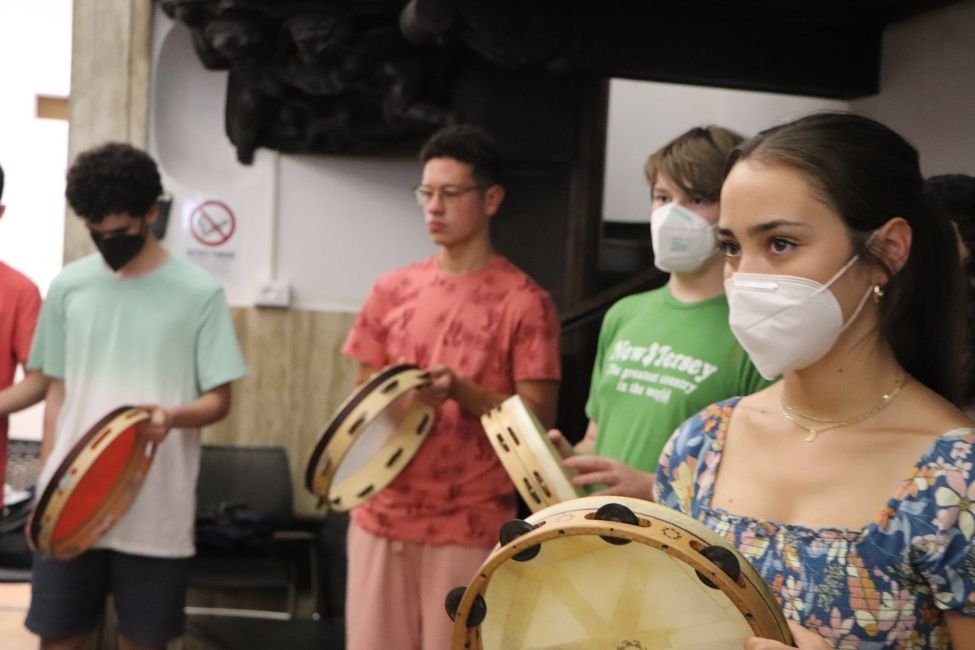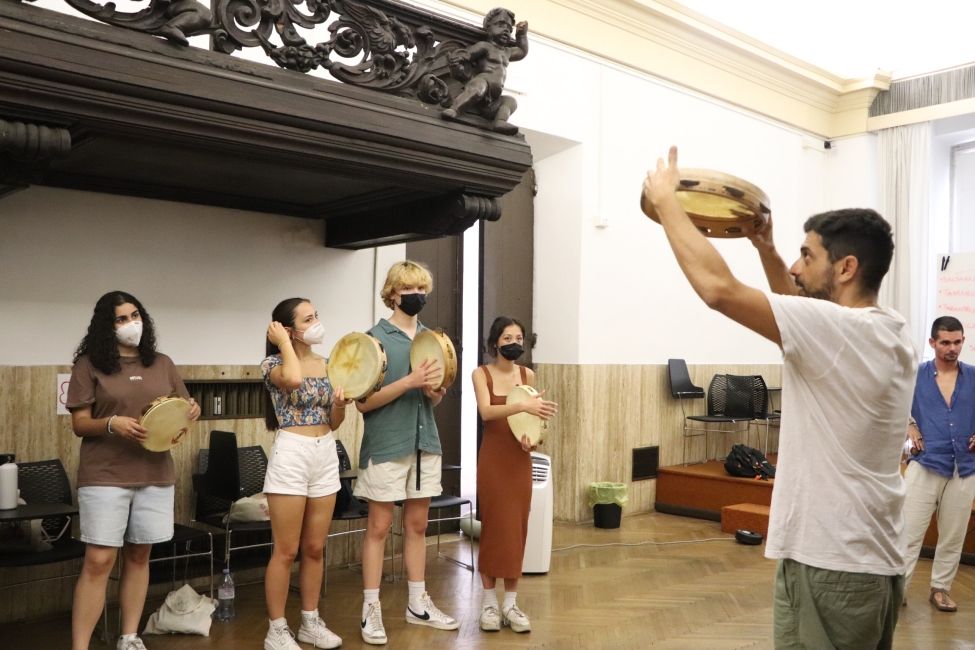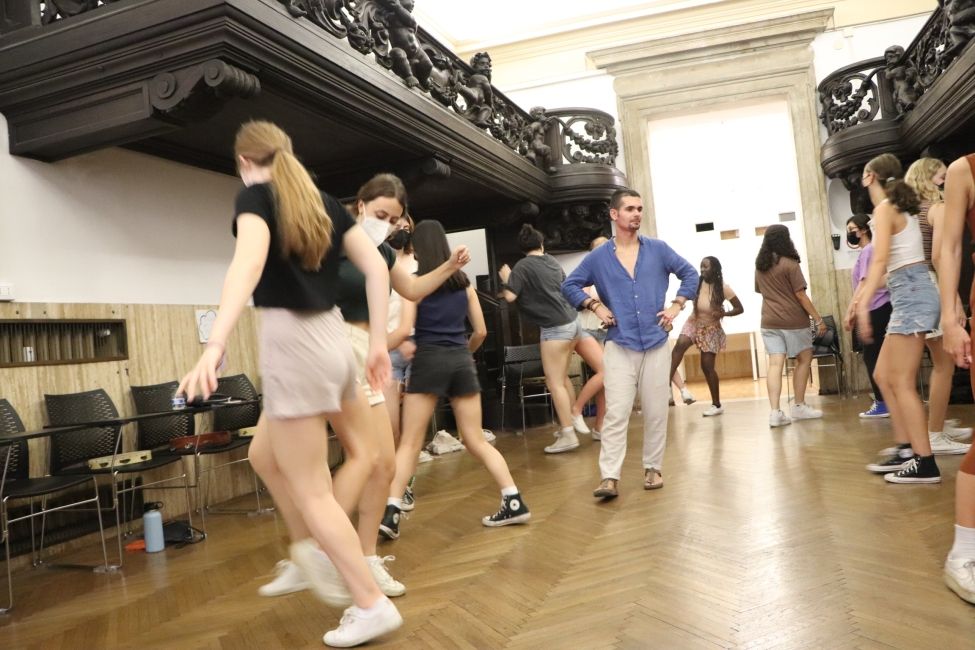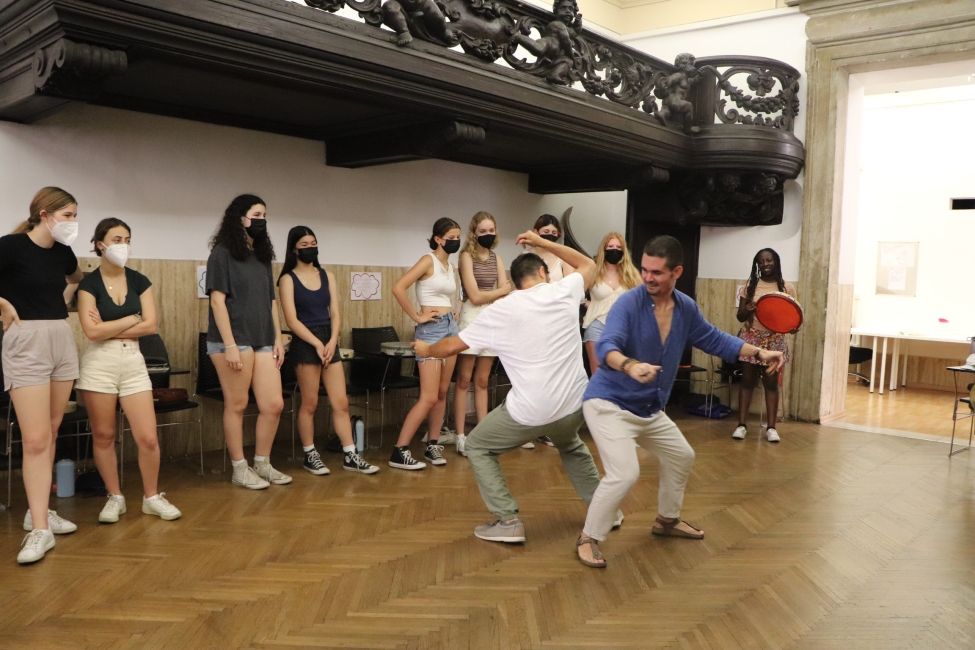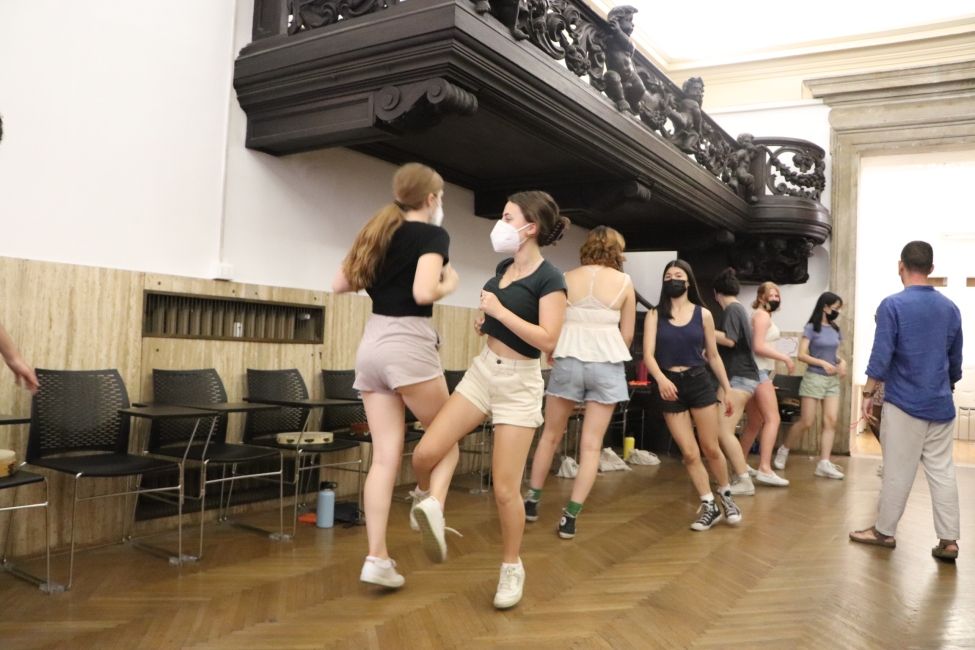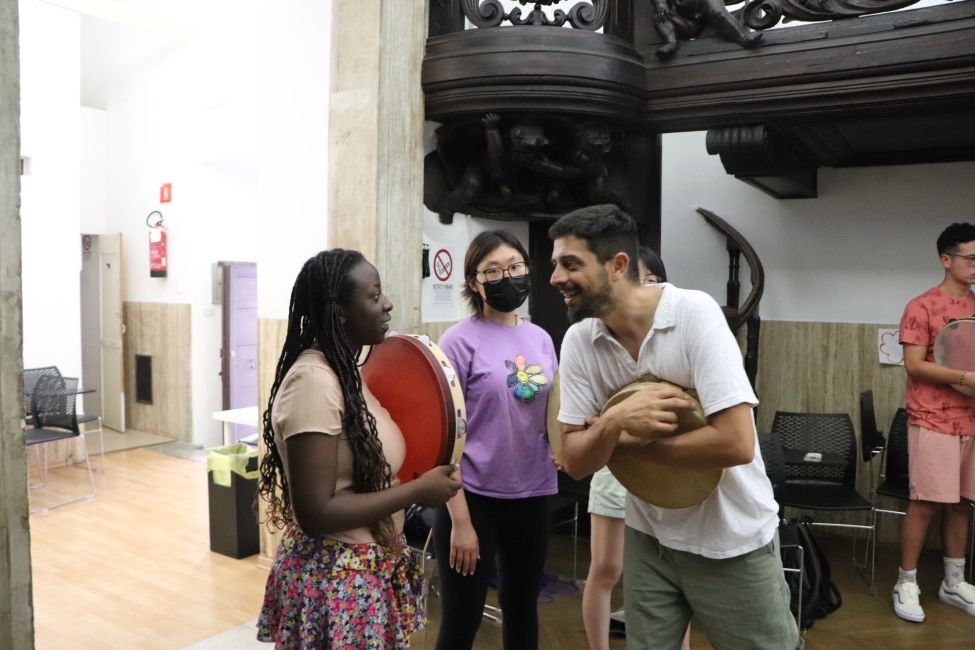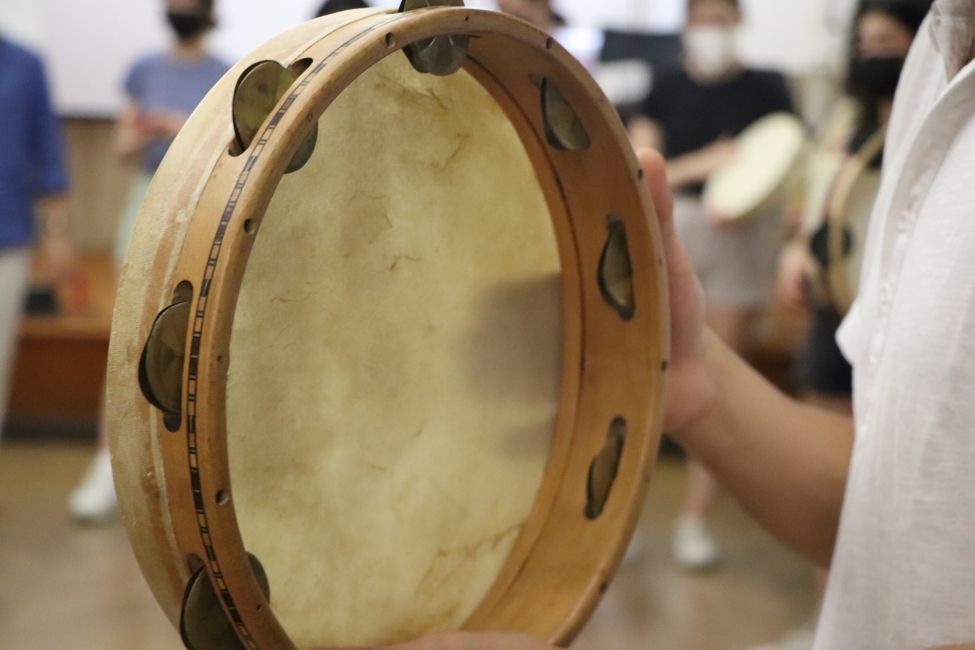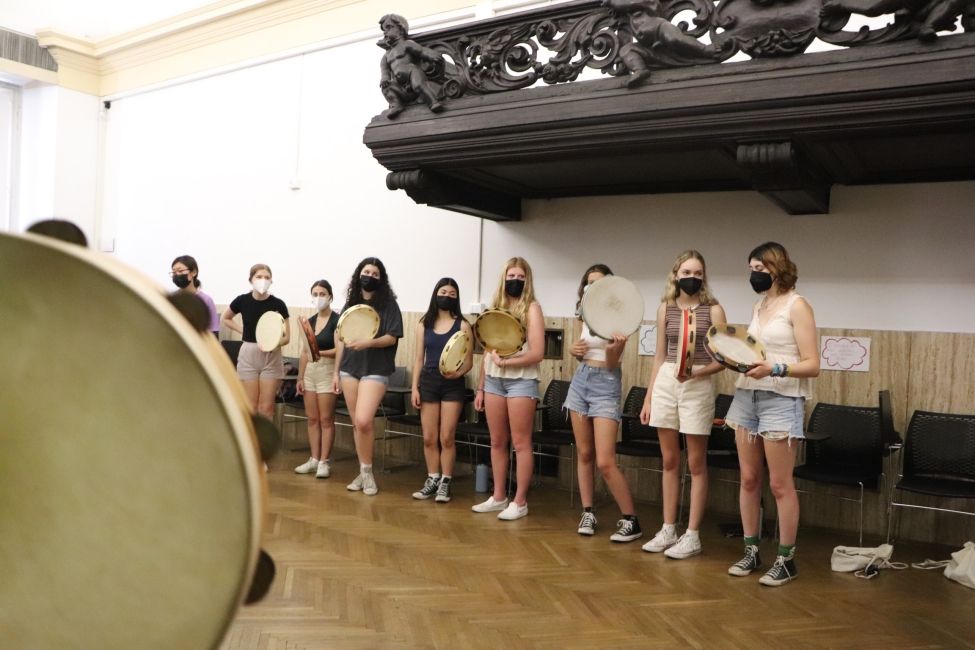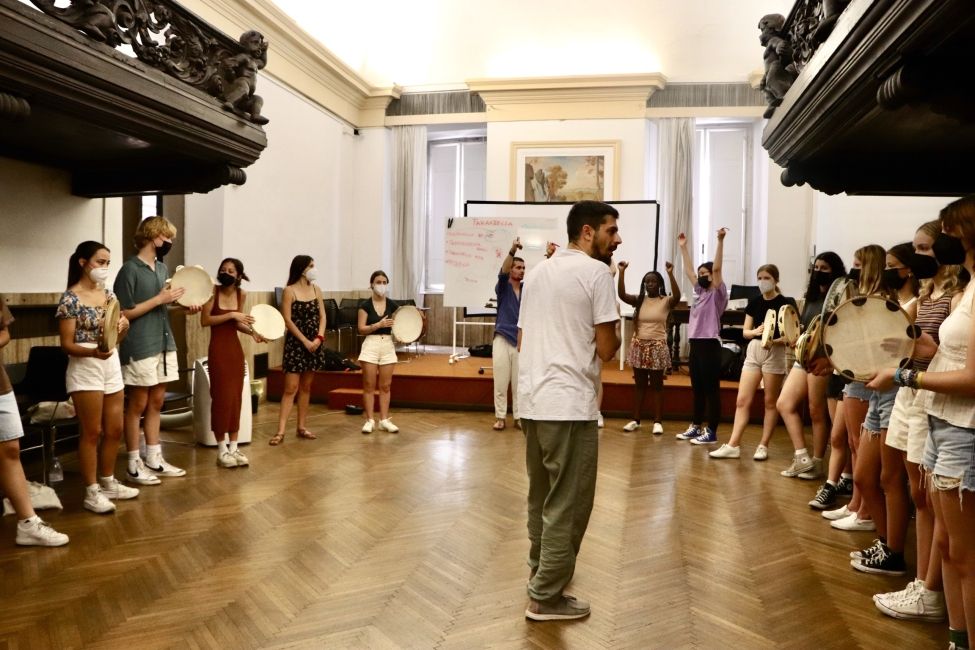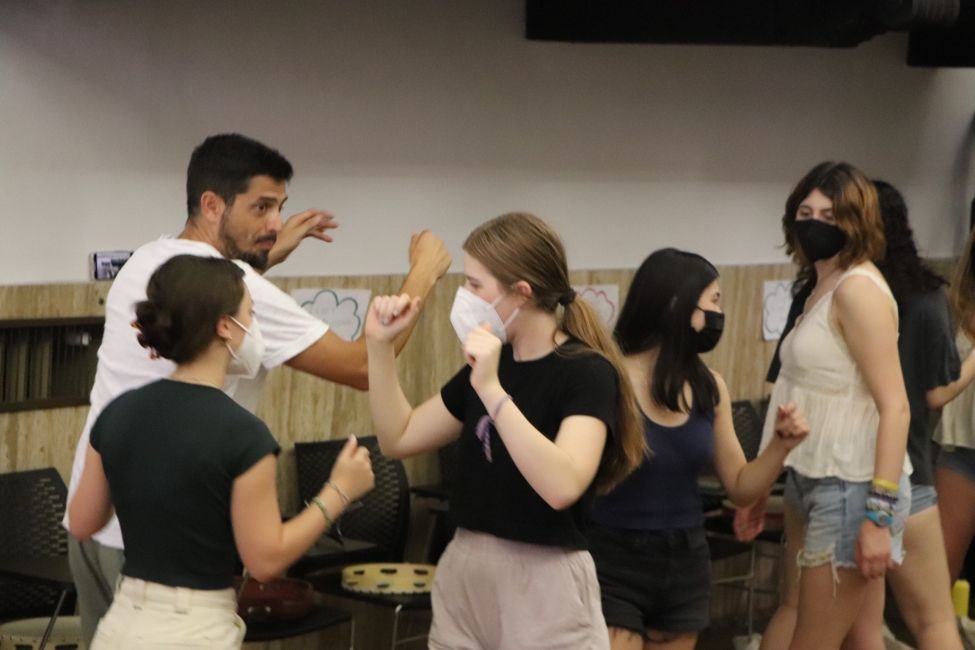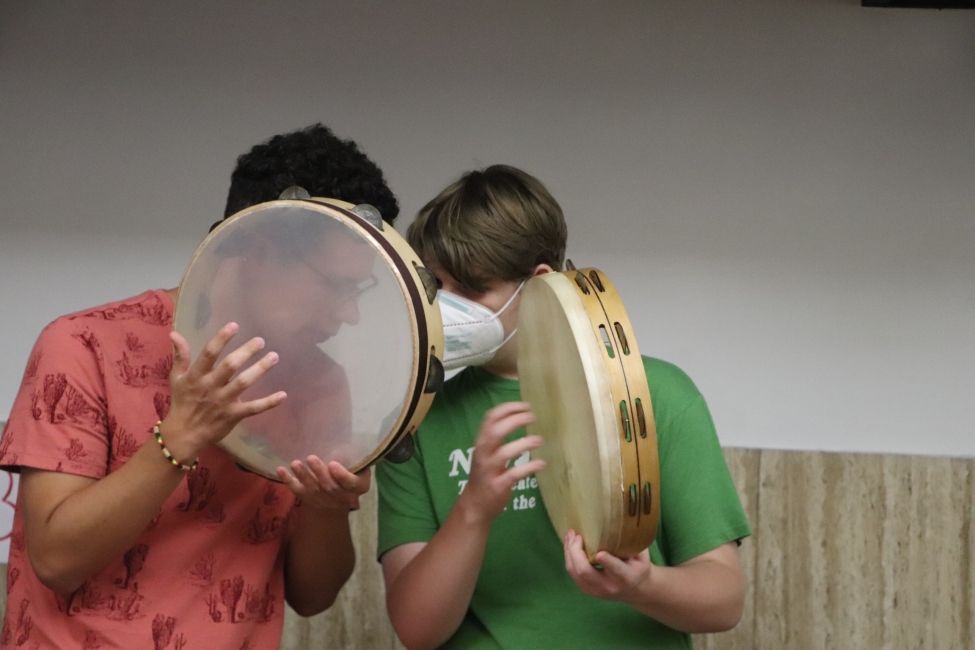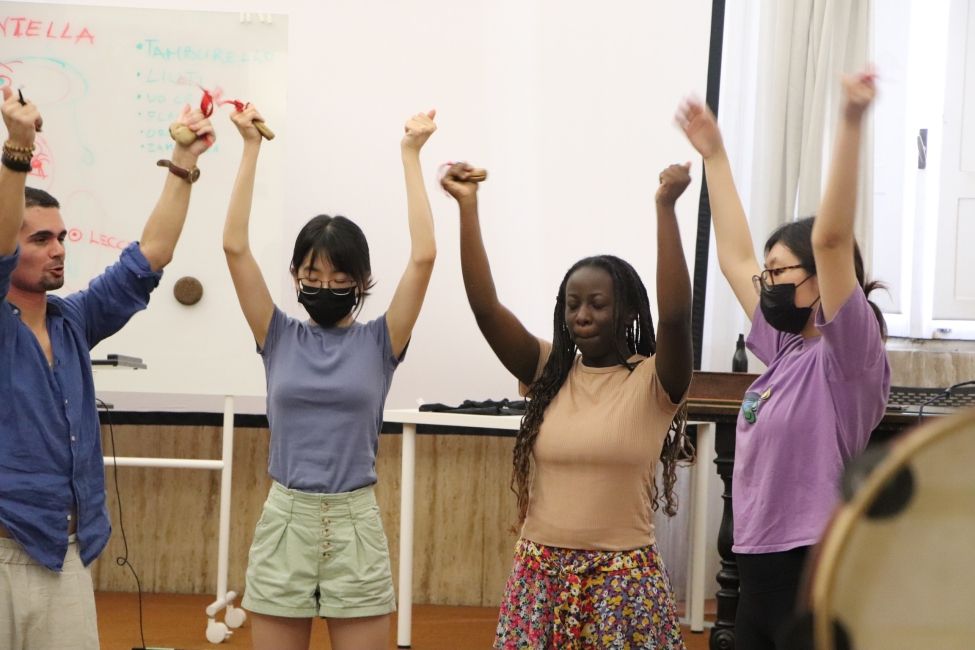Tarantella
On Friday we had a real cultural treat, as we learnt a traditional dance called Taranta or Tarantella!
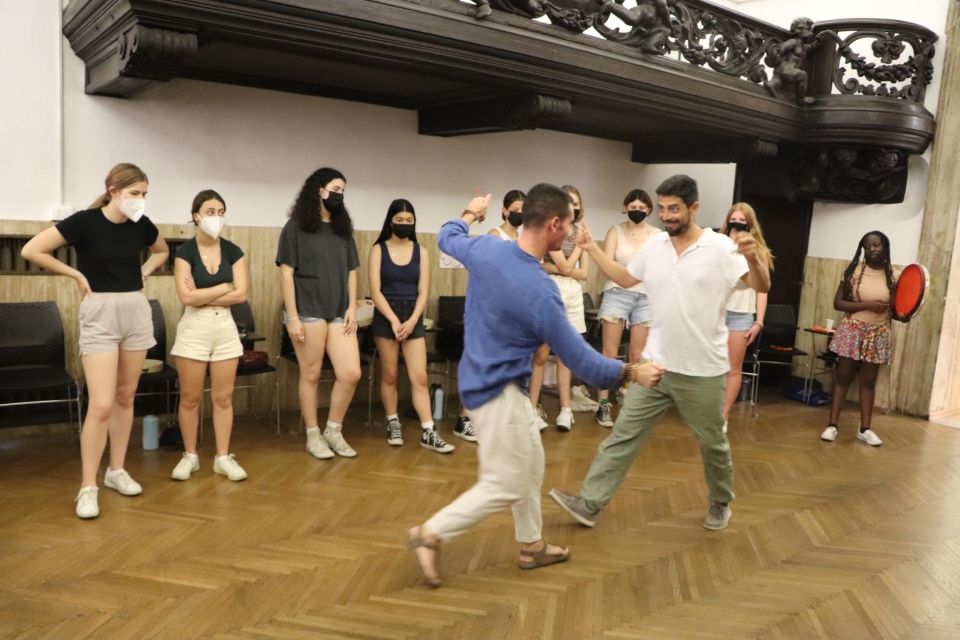
Percussionist Enrico and dancer Mattia were really happy to share the story of this dance with us.
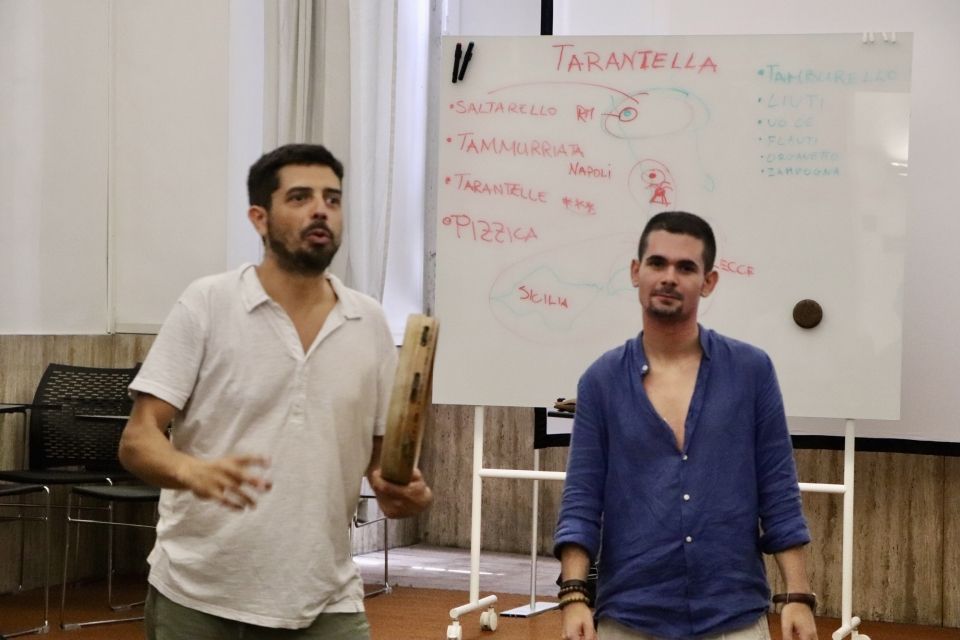
There are many versions of how the dance came to be but the simplest one is that it takes its name from the bite of a spider, the tarantula, which supposedly caused the disorder ‘tarantismo’. This illness tended to inflict people, particular women, of lower socio-economic backgrounds, causing an altered level of consciousness, convulsions and uncontrolled movements. Although tarantism was real, spiders are not to blame! The real causes were probably partly psychological and as tarantism was more common in the summer months, it may have been exacerbated by the exhaustion and heat from working long days under the hot sun.
Nevertheless the advice given to those affected was to dance wildly, to work off their extra energy and rid themselves of the effects of the “bite”.
This once therapeutic act became a folk dance which is still practiced today and has different versions depending on where you go.
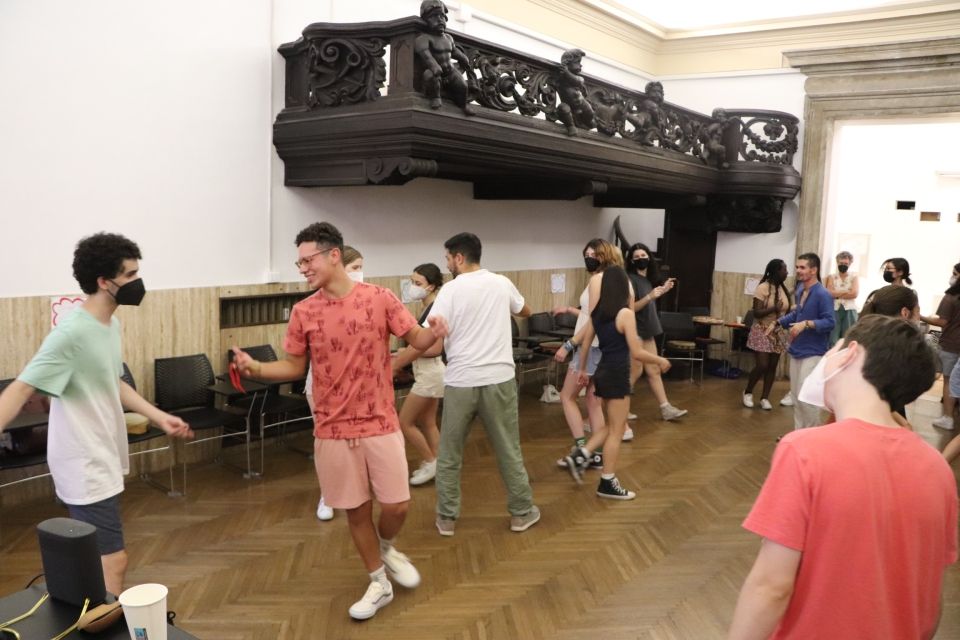
The dance is widespread from the centre to the south of Italy, and each region has its own version.
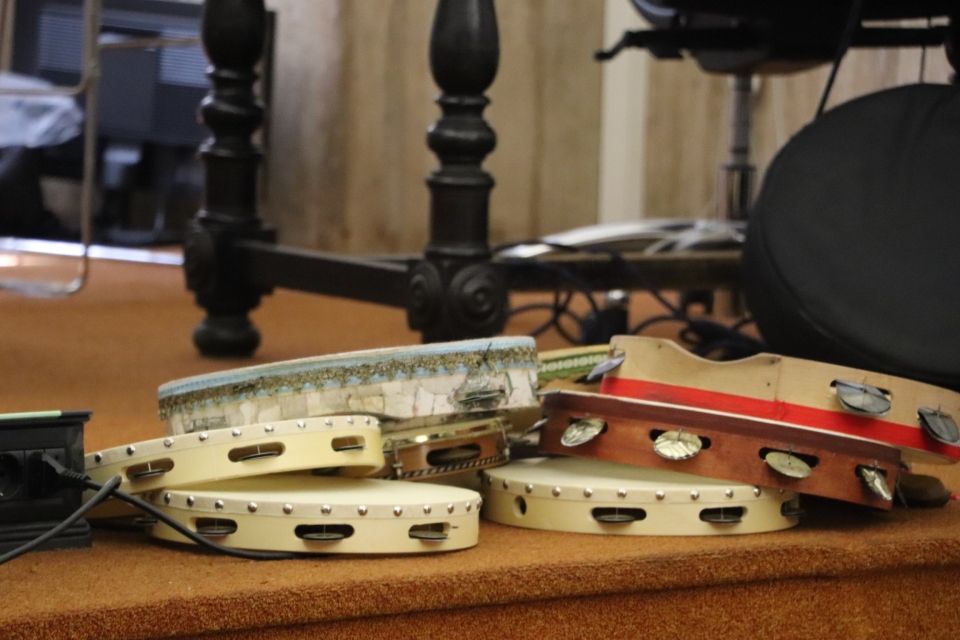
The one we tried was a Tammurriata which comes from the Vesuvius area near the bustling city of Naples, a dynamic place famous for music, theatrical arts and for being a melting pot of cultures.
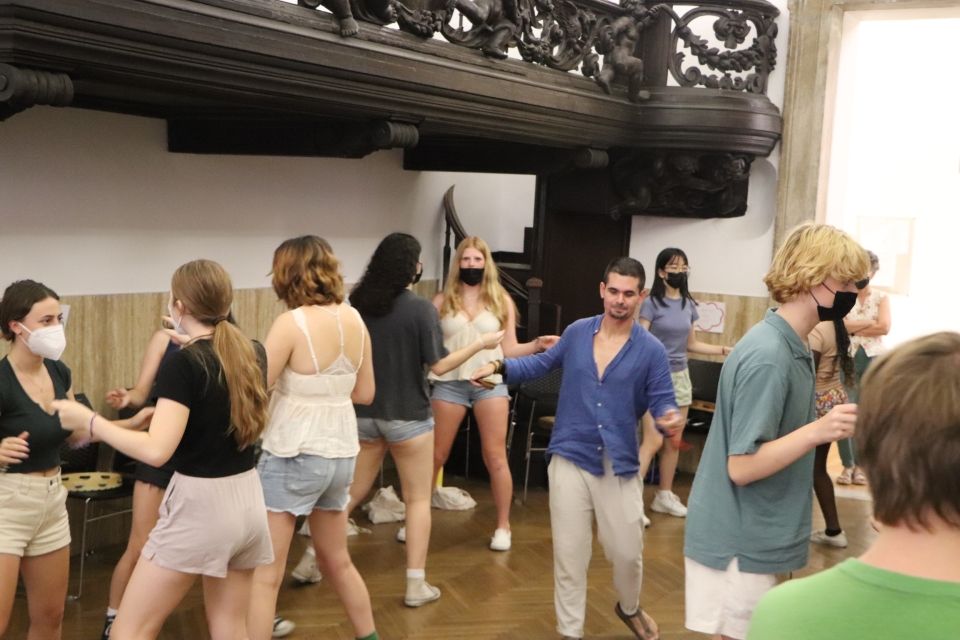
Mattia and Enrico made it look easy but we can say… it wasn’t!! But it’s definitely fun!!
We had a chance to try playing a couple of traditional instruments too…
- Tamburello which is a tambourine
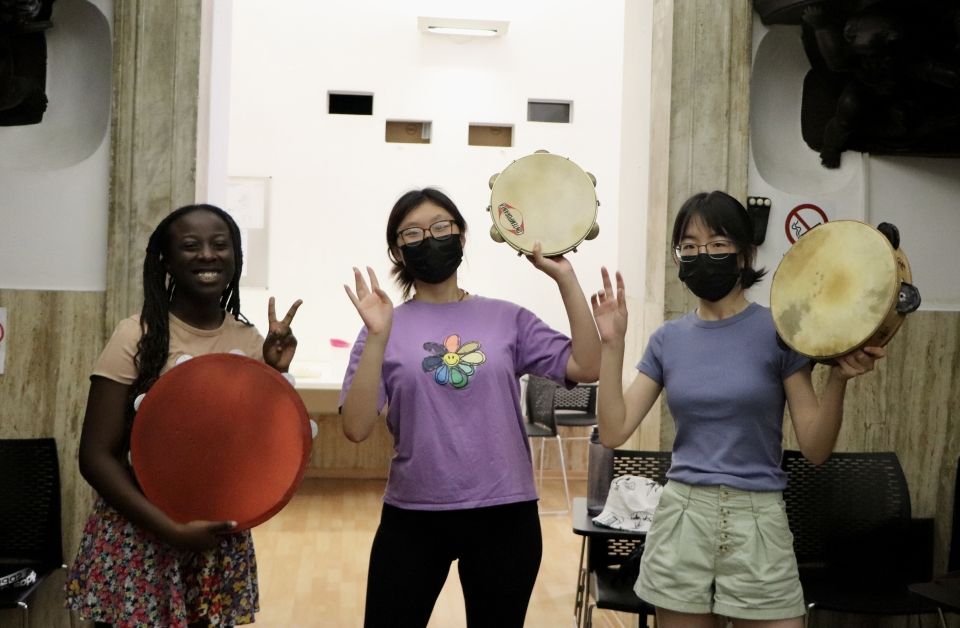
- Castagnette which are wooden castanets
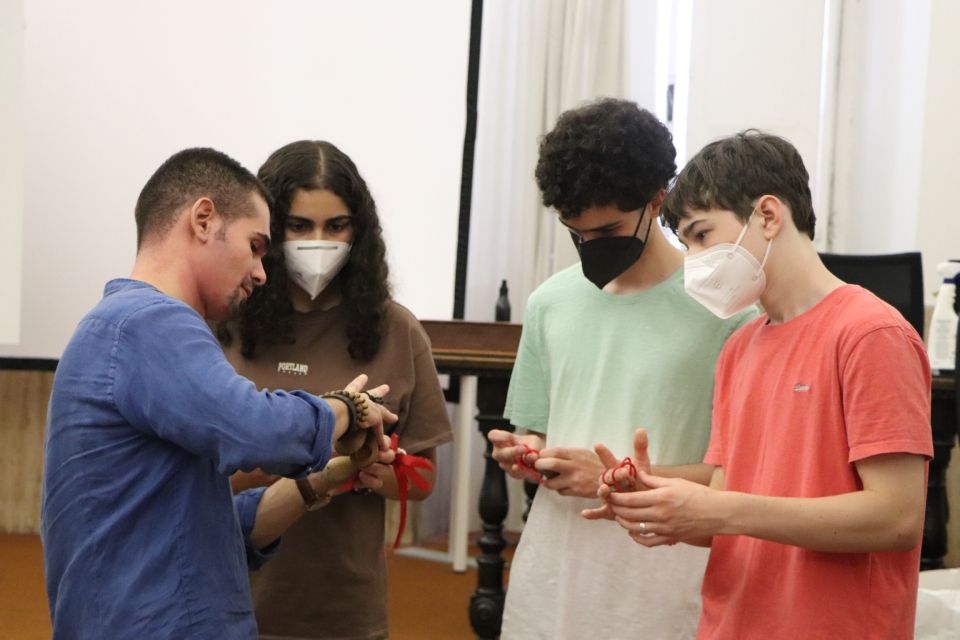
Other typical instruments associated with the Taranta are liuto (lute), flauti (flutes) and even bagpipes!!
Surprising right?
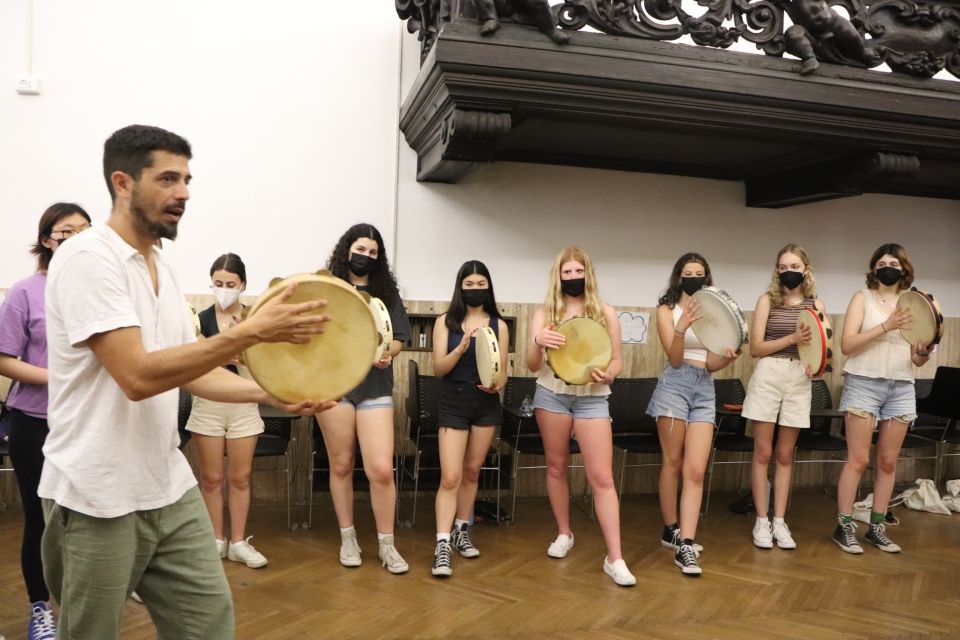
Our tamburelli and castagnette were enough to be getting on with so we got to grips with holding the instruments and keeping the rhythm. It's important to be in time with each other, and not to speed up or slow down.
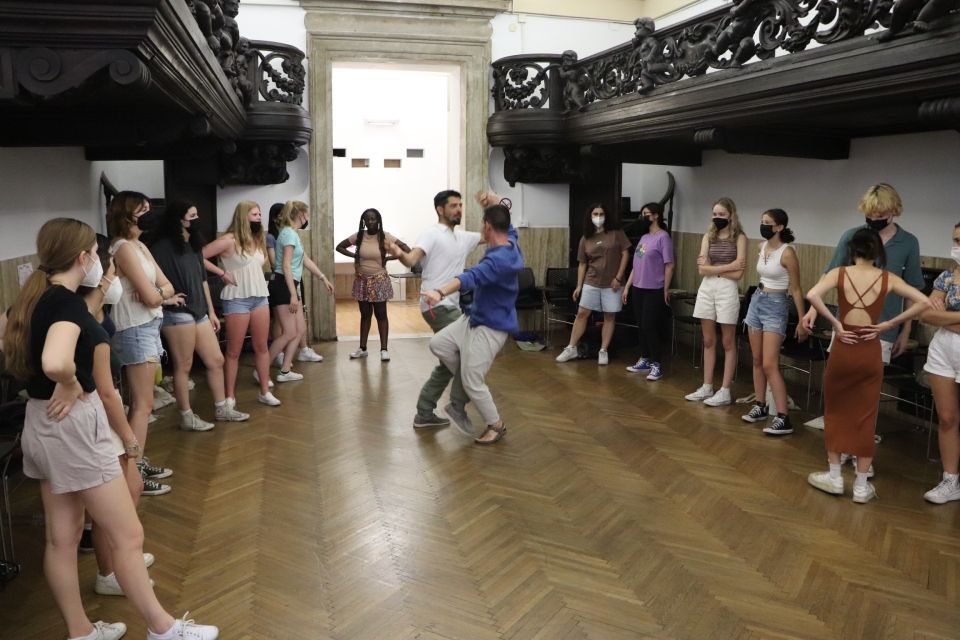
Once we got the basic steps left and right, we made pairs and practiced the Votata. What happens is the music gets louder and faster and the couple have to turn anti-clockwise. But nothing is simple with this dance so the votata moves range from the basic to the complicated.
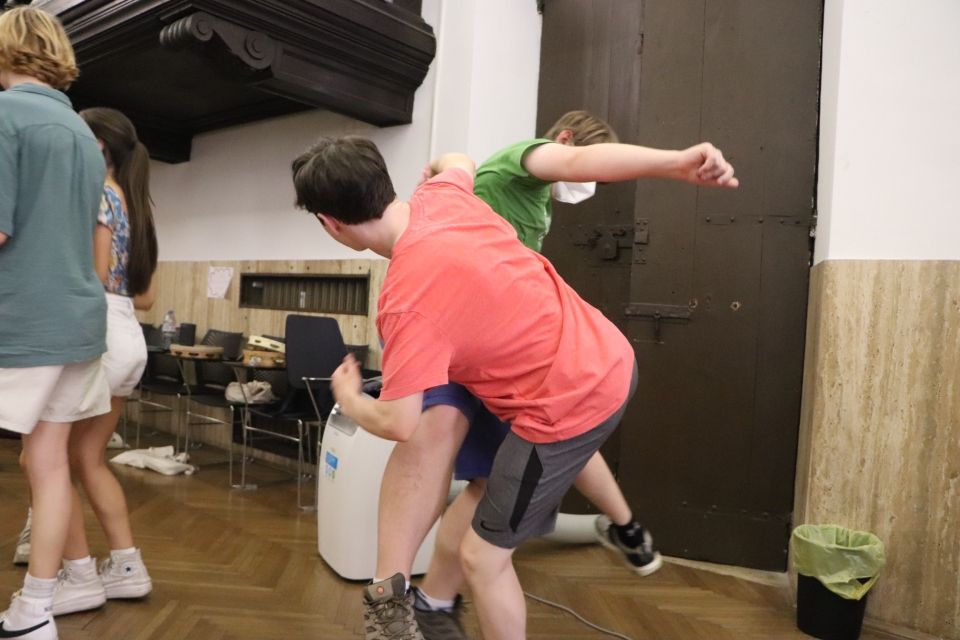
One very tricky one involves linking your right leg with your partner and hopping around in a circle, trying not to knock each other off balance. This was probably the trickiest and funniest step!! We might have toppled over once or twice but it’s all part of the fun!
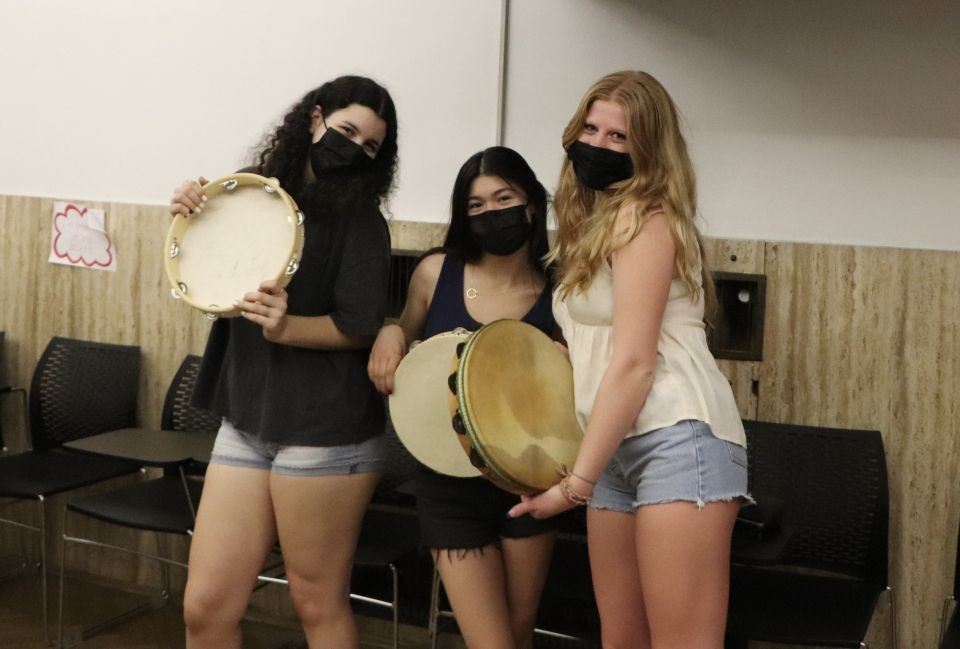
We might not be professional tarantolati yet, we need a bit of practice still, but it was definitely a LOT of fun!!
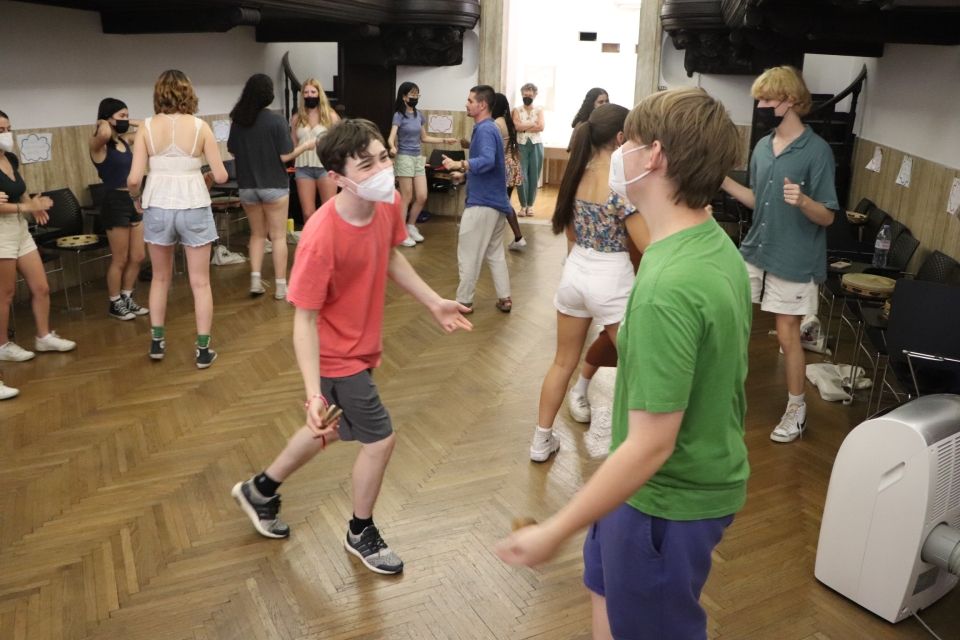
Related Posts
Lost in Florence: Finding Art in Every Corner
When Sam writes an article, you know the students are waking up early! Let's set aside thoughts of the Colosseum and the ancient Romans for a moment because we’re about... keep reading
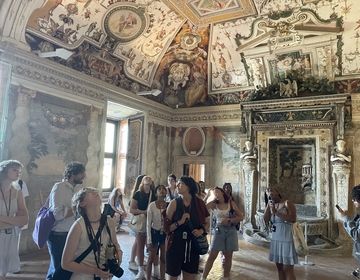
Once Upon a time … in Tivoli!
Nestled in the Italian region of Lazio, the charming town of Tivoli is a testament to Italy's rich historical tapestry and natural beauty. Just a short drive from Rome, Tivoli has been a favored retreat since ancient times, offering a perfect blend of natural splendor and architectural marvels. Among its many attractions, Villa d’Este stands out as a jewel of Renaissance architecture and landscape design.

Rome-ing with CIEE: Colossal Adventures at the Colosseum and Forum!
The alarm rang a bit earlier today, signaling the start of an exciting day for the students and their Program Leaders as they embarked on their first bus ride in... keep reading
